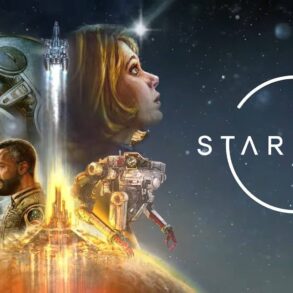After all, all the videos released so far strongly indicated this, when they depicted New York itself differently. The city is a bit further in its design. It’s bigger, it’s more alive, and it even looks better with animations. What’s more, everything is accompanied by restored graphics settings, so you can choose how the game will run for you. Similar to the two previous installments, you will now be guided through various graphics modes, including sharpness, fluidity and graphics compromise.
Marvel’s Spider-Man 2 will feature three graphics presets on PS5
Among the modes present, we can find one with 30, 60 and one with 40 fps (it will only be for owners of a screen with 120 Hz)
The resolution may also be dynamic, or modified according to the difficulty of the rendered scene
As previously leaked by an unofficial source, a total of three graphics modes were supposed to be present, which is confirmed. According to Mike Fitzgerald (director of game technology at Insomniac), Spider-Man 2 will feature modes:
30 frames per second mode,
60 frames per second mode,
40fps mode for 120hz screen owners.
As for the sharpness of the image, there was no mention of it. Speaking to IGN, Fitzgerald only hinted that at least some of them won’t be locked into one fixed value.
“The basis of how we decide to render different things in the game is dynamic resolution, and then we also have a fairly robust temporal smoothing solution that allows us to scale everything up and down, do different effects with materials and things in the scene.”
The last 40Hz mode, which like the others does not yet have an official name, is also associated with VRR, or variable refresh rate. This feature, which was implemented in Ratchet & Clank: Rift Apart by Insomniac studio for example, will be in this game as well, again with the fact that it allows the refresh rate of the output display to be smoothly changed on supported devices, thereby inducing a greater sense of fluidity in the game.
In the context of Marvel’s Spider-Man: Miles Morales (and indirectly the remaster of the original game), Fitzgerald also talked about previous graphics options. “We had Fidelity mode, which had full 4K in ray tracing reflections, and then we had Performance mode, which turned off ray tracing and rendered at a lower resolution. And then we managed, I think around launch, if not right after, to add what we called the RT performance mode, which tried to be the best of both worlds.”
In Marvel’s Spider-Man 2, Insomniac tried to secure this final mode of the golden mean as the foundation of what you’ll see in the game. According to the developers, it is true that no mode (including Performance) will lose ray tracing to a complete extent, although it will probably be true that it will be turned on to a different degree of intensity.
“For this game, we’re actually able to provide [ray tracing] as a core performance mode. There is no mode in this game that has ray tracing turned off. It’s not necessary. We’ve really figured out how to deliver what we feel is the right look and feel for Spider-Man, and we want to make sure that every one of our players gets to see that.”








